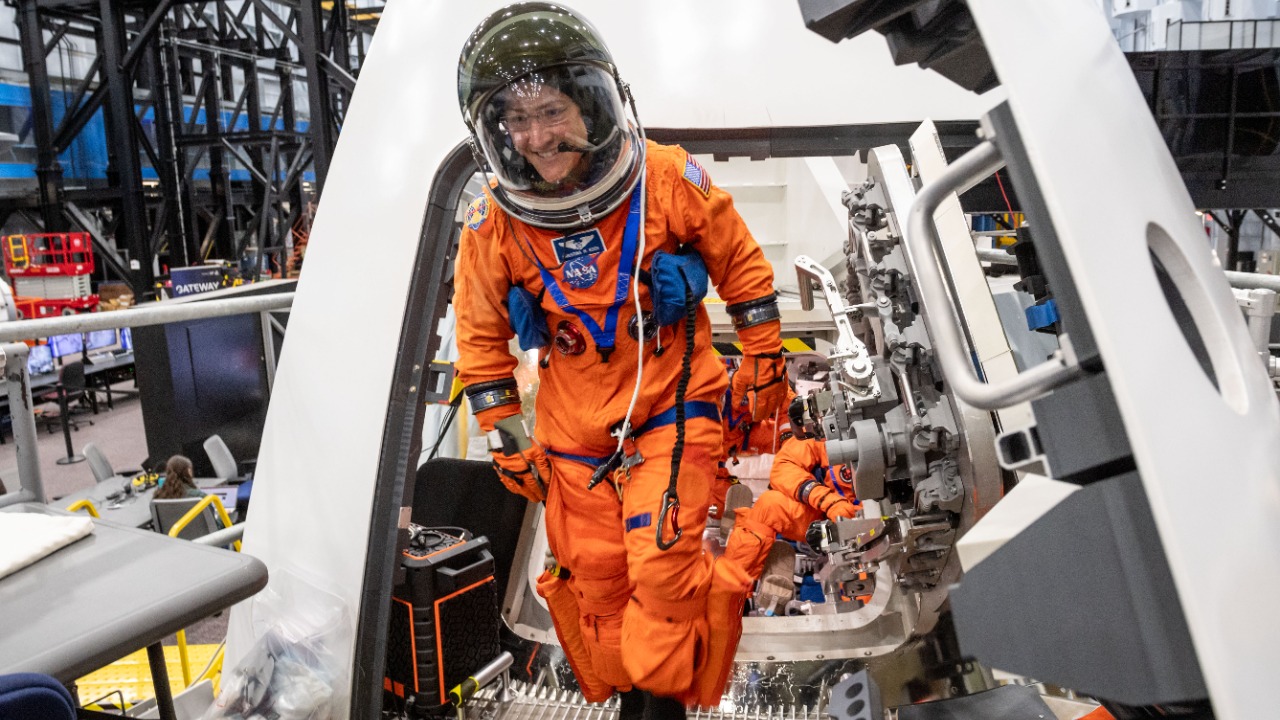
NASA and Lockheed Martin, the primary contractor for the Orion spacecraft, are now exploring the possibility of launching Orion on rockets other than the Space Launch System (SLS). This consideration marks a significant shift from previous plans, driven by ongoing challenges with the SLS program. The exploration of commercial launch vehicles for future missions could potentially reshape NASA’s approach to deep-space exploration.
Background on Orion’s Original Launch Plans
Historically, the Orion spacecraft has been closely tied to NASA’s SLS. This integration was a key component of NASA’s deep-space exploration strategy, with significant milestones such as the 2014 contract awards and the first uncrewed Orion flight on SLS during the Exploration Flight Test-1 (EFT-1) in 2014. These events underscored the commitment to using SLS as the primary launch vehicle for Orion, reflecting a long-term vision for lunar and deep-space missions.
Lockheed Martin has been the developer of Orion since 2006, making specific engineering decisions to ensure the spacecraft’s compatibility exclusively with the SLS. This included considerations of the spacecraft’s size and propulsion interfaces, which were tailored to fit the SLS specifications. The early assumptions of the Artemis program, starting in 2019, further cemented this relationship, with budget allocations exceeding $20 billion for SLS development through 2025, reinforcing the expectation that Orion would launch solely on SLS for lunar missions.
Challenges Driving the Shift to Alternatives
The SLS program has faced significant development delays and cost overruns, with total expenditures reaching $23 billion by 2025. These challenges have been compounded by repeated schedule slips, such as the delay of the Artemis I mission, initially planned for 2020 but not launched until 2022. These issues have prompted NASA to conduct internal reviews in 2025, leading Lockheed Martin to evaluate Orion’s adaptability to other launch vehicles. NASA Administrator Bill Nelson emphasized the need for flexibility amid fiscal pressures, highlighting the importance of exploring alternative options.
Technical hurdles also play a role in this shift. Orion’s abort system and heat shield were specifically designed for the SLS, necessitating potential modifications estimated at $500 million to integrate with alternative rockets. These technical and financial challenges underscore the complexity of adapting Orion for different launch vehicles, yet they also highlight the potential benefits of increased flexibility and cost savings.
Potential Alternative Launch Vehicles
SpaceX’s Starship emerges as a leading candidate for launching Orion, given its successful test flights in 2025 and its impressive payload capacity exceeding 100 metric tons to low Earth orbit. NASA has already invested $2.9 billion in a Starship lunar lander variant, indicating a strong interest in leveraging SpaceX’s capabilities for future missions. This investment reflects the agency’s willingness to consider commercial partners as viable alternatives to the SLS.
Blue Origin’s New Glenn rocket, scheduled for its debut in late 2025 from Cape Canaveral, presents another potential option. With the capability to handle Orion’s 26-metric-ton mass and a payload capacity of up to 45 metric tons to low Earth orbit, New Glenn could offer a viable alternative for launching Orion. The introduction of New Glenn into the market could further diversify NASA’s launch options, enhancing the agency’s ability to meet its exploration goals.
Additionally, United Launch Alliance’s Vulcan Centaur, operational since 2024, offers a medium-lift option that could be paired with upper stages for Orion missions. Backed by NASA’s $5.6 billion in national security launch contracts, Vulcan Centaur represents a reliable and tested alternative. These potential launch vehicles provide NASA with a range of options to consider as it seeks to optimize its Artemis program and achieve its exploration objectives.
Implications for NASA’s Artemis Program
Adopting alternative rockets could significantly accelerate the timelines for the Artemis program, potentially enabling crewed lunar landings by 2027 instead of 2028 under the current SLS constraints. Lockheed Martin is leading adaptation studies to explore these possibilities, highlighting the potential for more efficient mission planning and execution. This shift could also result in substantial cost savings, reducing per-launch expenses from SLS’s $4 billion to under $1 billion on commercial vehicles, while still preserving Orion’s role in the 10 planned Artemis missions through 2035.
However, transitioning to new launch vehicles is not without risks. Certification processes for new vehicle pairings, including FAA and NASA safety reviews, are expected to take 18-24 months starting in 2026. These reviews are crucial to ensuring the safety and reliability of the new launch configurations, but they also introduce potential delays and uncertainties into the program’s timeline. Balancing these risks with the potential benefits will be a key consideration for NASA and its partners as they move forward.
Lockheed Martin’s Perspective and Next Steps
Lockheed Martin executives have expressed openness to evolving Orion’s launch architecture to meet NASA’s goals. Vice President Rob Binnie stated, “We’re open to evolving Orion’s launch architecture to meet NASA’s goals,” reflecting the company’s willingness to adapt to changing circumstances and explore new opportunities. Lockheed Martin’s $93 billion backlog in space contracts underscores the company’s significant role in the aerospace industry and its commitment to supporting NASA’s exploration efforts.
Planned studies through 2026, including wind tunnel tests and simulations for Orion on non-SLS stacks, are funded by a $100 million NASA allocation. These studies aim to evaluate the feasibility and performance of Orion on alternative launch vehicles, providing critical data to inform future decisions. The potential for partnerships with commercial providers also presents opportunities for Lockheed Martin to collaborate with other industry leaders, sharing intellectual property for Orion’s avionics in alternative configurations.
The exploration of alternative launch options for Orion represents a significant shift in NASA’s approach to deep-space exploration. By considering commercial launch vehicles, NASA and Lockheed Martin are positioning themselves to overcome the challenges associated with the SLS program and capitalize on new opportunities for innovation and collaboration. This strategic pivot could ultimately enhance the Artemis program’s success and ensure the continued advancement of human space exploration.